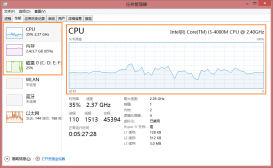本文介绍了mongodb如何对文档内数组进行过滤的方法步骤,分享给大家,具体如下:

mongodb文档内包含数组,需要将数组中符合条件的数据过滤出来并返回结果集,可以用两种方式来查询group或filter。
数据源:
|
1
2
3
4
5
6
7
8
9
10
11
12
13
14
15
16
17
18
19
20
21
22
23
24
25
26
27
28
29
30
31
32
33
34
35
36
37
38
|
{ "_id" : ObjectId("5bbcc0c9a74db9804e78a157"), "uid" : "1000001", "name" : "zhangsan", "addrs" : [ { "is_query" : "1", "city" : "北京" }, { "is_query" : "0", "city" : "上海" }, { "is_query" : "1", "city" : "深圳" } ]}{ "_id" : ObjectId("5bbcc167a74db9804e78a172"), "uid" : "1000002", "name" : "lisi", "addrs" : [ { "is_query" : "0", "city" : "北京" }, { "is_query" : "0", "city" : "上海" }, { "is_query" : "1", "city" : "深圳" } ]} |
要求查询指定uid下,addrs数组中只包含is_query等于1的结果集(0的不包含)。
查询语句:
方法一:使用$unwind将addrs数组打散,获取结果集后用$match筛选符合条件的数据,最后使用$group进行聚合获取最终结果集。
|
1
2
3
4
5
6
7
8
9
10
11
12
13
14
15
16
17
18
19
|
db.getCollection('user').aggregate( [ { $unwind: "$addrs" }, { $match : { "uid":"1000001", "addrs.is_query": "1" } }, { $group : { "_id" : "$uid", "addrs": { $push: "$addrs" } } } ]) |
Result:
|
1
2
3
4
5
6
7
8
9
10
11
12
13
|
{ "_id" : "1000001", "addrs" : [ { "is_query" : "1", "city" : "北京" }, { "is_query" : "1", "city" : "深圳" } ]} |
方法二:使用$match过滤符合条件的根文档结果集,然后使用$project返回对应字段的同时,在addrs数组中使用$filter进行内部过滤,返回最终结果集
|
1
2
3
4
5
6
7
8
9
10
11
12
13
14
15
16
17
18
19
20
|
db.getCollection('user').aggregate( [ { $match : { "uid": "1000001" } }, { $project: { "uid": 1, "name": 1, "addrs": { $filter: { input: "$addrs", as: "item", cond: { $eq : ["$$item.is_query","1"] } } } } } ]) |
Result:
|
1
2
3
4
5
6
7
8
9
10
11
12
13
14
15
|
{ "_id" : ObjectId("5bbcc0c9a74db9804e78a157"), "uid" : "1000001", "name" : "zhangsan", "addrs" : [ { "is_query" : "1", "city" : "北京" }, { "is_query" : "1", "city" : "深圳" } ]} |
相对于$group分组聚合返回结果集的方式,在当前查询要求下$filter显得更加优雅一些,也比较直接。当然如果包含统计操作,比如要求返回is_query等于1的数量,这时候$group就非常合适了。
以上就是本文的全部内容,希望对大家的学习有所帮助,也希望大家多多支持服务器之家。
原文链接:https://segmentfault.com/a/1190000016629733













